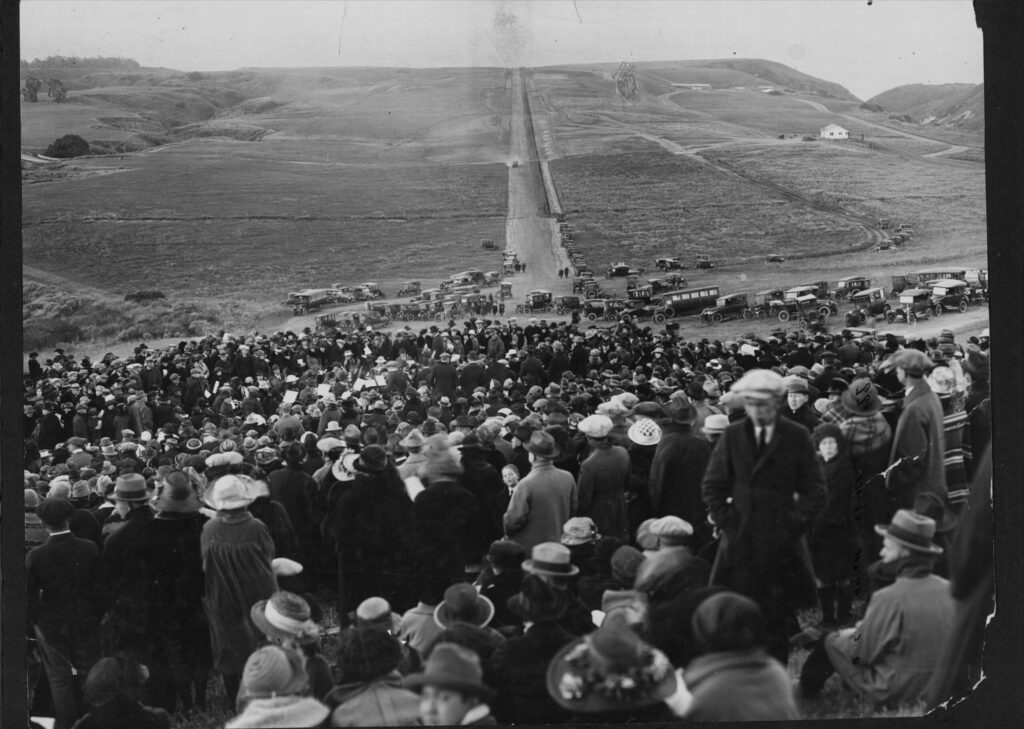The Pacific Palisades of 1922
In early 1922—the year Emily Post gave us etiquette, Irving Berlin wrote “April Showers,” the Hollywood Bowl opened, the USSR was established and Warren G. Harding was president—a group of Methodists began building the town of Pacific Palisades on mesas that swept “from the mountains to the sea.”
A year earlier, Rev. Charles Holmes Scott and his associates had purchased 1,068 acres of prime land for $618 an acre on which to build the country’s “greatest Chautauqua site” in Temescal Canyon—and an adjacent residential community based on Christian ideals and dedicated to peace, in the aftermath of World War I. The Methodist then sold 1,000 Founders’ Certificates, which allowed the purchaser to choose a lot and build a house.
At that time, the Palisades mesas were mostly devoted to raising cattle and growing fields of hay, lima beans, and peas. A subdivision plan was drawn up and by the end of 2021, a checkerboard of roads had been scraped out north of Beverly Boulevard (now Sunset), east of Temescal Canyon.
The lots in Founders Tract 1 were kept small and the streets narrow to create reasonably priced housing for retired missionaries and clergymen, widows, and other Christian folks of modest means. South of Beverly (Founders Tract II), the layout was more spacious, with wider streets, larger lots, and less regular terrain stretching down to the Via Bluffs.
By 9 a.m. on January 14, 1922, Rev. Scott later wrote, “the people began to arrive, and by ten-thirty the mesa was dotted with groups of Founders and members of their families, selecting first, second, and third choices among the lots which had been staked out of by surveyors.”
Selection continued until early afternoon when everyone gathered under the oaks in Temescal Canyon and Rev. Scott’s daughter, Martha, drew the lucky slips and the winners were announced.
Development moved rapidly from that point on, and by July the Founders were ready to hold a two-week Chautauqua Assembly, welcoming visitors with a new auditorium, cafeteria (still in use today), outdoor amphitheater, 35 small cabins, and some 200 tent frames. The cultural highlight was a performance by the world’s greatest contralto, Ernestine Schumann-Heink.
By year’s end, the roads were graded, sidewalks and utilities were installed, and homes were under construction. Down in Temescal Canyon, Carl Hoss opened a small grocery next to Leonard Warrell’s meat market, while Robert Norris moved up from Long Beach to start a plumbing business (and, in 1924, a hardware store).
Cliff Clearwater delivered the mail by horseback twice a day, and Robert Corr established the first gas station. His daughter Elizabeth was the first child born to local parents on July 4, 1922.
Meanwhile, the Methodists began organizing the town’s only church, which was initially named the Community Methodist Episcopal Church, and on December 24 of that historic year, the 77-member congregation was formally established.
(This article was adapted from “Pacific Palisades: Where the Mountains Meet the Sea,” by Betty Lou Young and her son Randy.)
Peace Hill Easter Celebration 1922
Looking down from the first Easter celebration on Peace Hill in 1922, we see Via de la Paz stretching from today’s Bestor Boulevard to the bluffs. The car-raising dust is near Marquez Road (today’s Sunset Boulevard). Notice the beautiful, untamed Potrero Canyon (far left) and the equally wild Temescal Canyon (far right), bordered by Radcliffe Avenue on the east side.
Photo: Palisades Historical Society/Clearwater Collection
